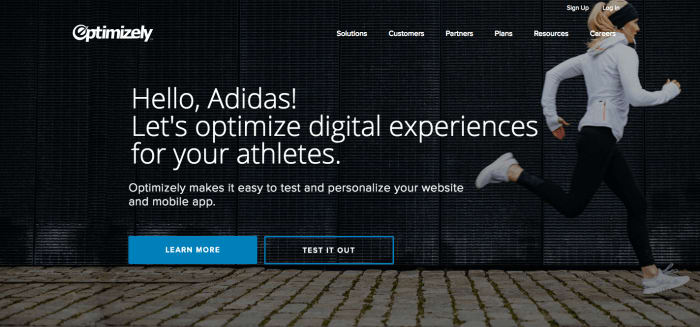Account-based marketing
What is account-based marketing (ABM)?
Account based marketing (ABM) is a business marketing strategy that concentrates resources on a set of target accounts within a market. It uses personalized campaigns designed to engage each account, basing the marketing message on the specific attributes and needs of the account.
ABM also takes a more holistic view of marketing, beyond just lead generation. Marketing to existing customer accounts to encourage upselling and cross-selling is one of the keys to getting the most value from your largest accounts.
The benefits of account-based marketing
Account-based marketing is an increasingly popular approach for B2B companies that target larger accounts. For companies that are trying to sell into large accounts with long sales cycles and large deal sizes, account-based marketing offers many benefits over other marketing approaches:
Personalized marketing approach
Instead of a generic approach, marketers create personalized messaging for target accounts, taking what they know about their customer and tailor the creative assets of their campaign to the customer’s specific attributes and needs.
Sales & marketing alignment
Account-based marketing encourages marketing teams and sale organizations to work together, identifying target accounts, crafting customized campaigns for them, and working together to align and move individual accounts through the pipeline, both before and after lead conversion.
Shorter sales cycles
Major purchase decisions involve multiple stakeholders. This typically slows down the sales process, because it starts at a lower level level in the organization and moves slowly towards the primary decision maker. In account-based marketing, the length of the cycle is shortened as all prospects are nurtured simultaneously.
Clearer ROI
Account-based marketing is precise and measurable, providing the highest ROI of all B2B marketing tactics. 85% of marketers who measure ROI describe account-based marketing as delivering higher returns than any other marketing approach.
Fewer wasted resources
Time and resources are narrowly focused on a small number of accounts that are most likely to close sales. This frees up resources that would previously have been wasted.
Account-based marketing examples:
Account based-marketing begins with creating meaningful segments and then identifying marketing programs that can be personalized to those segments on the channels that are most impactful to them (events, website, email). Each company’s strategy will employ its own particular mix of tactics.
Your approach to targeting a specific account will depend on the particular attributes of that account, meaningful segments for that account and its relevant marketing channels. The target segments you choose to ABM programs around will be the ones that can add the most value to your organization. Below are some real-world examples of how B2B marketers can use to develop account-based marketing programs:
Events
In-person events have always been one of the most successful opportunities for sales teams to persuade decision makers. An ABM approach to events can include personalized invitations to key prospects from target accounts, special VIP dinners, personalized gifts and schwag for target accounts, and personalized follow-up after the event.
Webinars
Similar to events, webinars can be customized to be relevant and timely for a specific target account. Webinar events and follow-up can be tailored for specific companies, and unique webinar content can be created with the target audience in mind.
Direct mail
In an age where everyone is overloaded with email, direct mail has increasingly become a popular method of reaching prospects within a company. Since ABM is more targeted, gifts and marketing sent through direct mail can be higher value since the revenue potential is much higher.
Email campaigns
Even with the popularity of direct mail, email is still a valuable marketing channel for ABM. Whereas a volume-based marketing approach might use templates and marketing automation, account based marketing involves crafting tailored email messages for each company and individual.
Paid advertising
PPC and paid social media ads are a common way of reaching out to target accounts on the web. Social platforms such as LinkedIn and Facebook allow you to target specific companies and personas, and using technology such as IP targeting and retargeting, your display campaigns can be tailored to focus on a handful of target accounts rather than casting a wide net.
Web personalization
ABM campaigns on the web don't end with driving traffic through personalized SEM and inbound marketing campaigns. Once visitors reach the website, website personalization technology can be used to create a tailored, account-specific experience for target prospects vs the generic website experience.
How to implement account-based marketing
Below is a step-by-step guide to setting up account-based marketing.
Step 1: Identify your high-value target accounts
These are the key accounts that have the potential to contribute the most to the revenue of your company.
Step 2: Conduct research on those accounts
Get a good snapshot of their customer needs and pain points, as well as where they are in their customer journey.
Step 3: Develop customized marketing campaigns
Using information you learned in the research phase to inform your strategy, develop creative assets that will resonate with the target account.
Step 4: Run your customized marketing campaigns
Launch your campaigns to the target account.
Step 5: Measure your customized marketing campaigns
Analyze the data to see how your campaigns are performing.
Account-based marketing and personalization
Website personalization is an important part of ABM strategy, as it allows you to tailor the creative and a messaging on a website to each of your target accounts. In the same way that offsite marketing efforts are personalized for each account, the experience that visitors have once they land on your site can be tailored through website personalization.
Web personalization for ABM is done by using firmographic data that typically comes through reverse IP lookup or through first-party or third-party data to identify anonymous visitors that come to your site. Once the company of the visitor has been identified, they can be matched against your target account list to provide a personalized web experience.
There are many components of a website that can be tailored through account-based personalization, including messaging, images, calls-to-action and social proof. The following are some examples of personalized content from real-world scenarios.
Personalized hero images and headlines segmented by industry:  Personalized first name or company greeting:
Personalized first name or company greeting: 
Personalized variations in content targeting specific segments: 
Personalized variations in Calls to Action
Targeting specific segments (prospects vs. customers) 



 Personalized first name or company greeting:
Personalized first name or company greeting: 

